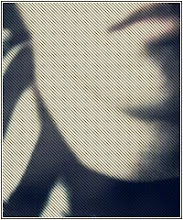As I flesh out the meat and bones of this card game, I want to make sure it's a blast to play. What are the pros and cons from a 'fun' gameplay standpoint of a card game and a fighting game relevant to my idea, and what can be taken from them? Long post incoming.
Magic: The Gathering Pros and Cons;
+ Collecting. The cards all have value, different rarities / availability, and some slick artwork.
+ Deck Variety. Tons of cards, tons of options. There are competitive decks, casual decks, crappy decks and janky decks. The amount of cards also means there's generally some card(s) that counter the "best" deck in the format.
+ Wide gameplay options. There are generally lots of decisions to be made in the game, especially in draft and Type 2, and it's a far cry from the rudimentary rock-paper-scissors base. There are also many ways to trick your opponent or earn victory, some of which being hilarious and/or embarassing, which make for great storytelling even after the game has ended.
- "Mana Screwed". To play cards, you need to use mana, the resource of the game. You will inevitably play some games against people who could have little idea of the deeper gameplay going on, but if your hand is devoid of mana, you either risk playing that hand or you go one card down. The VS and WoW card systems have anti-mana screwed mechanics; you can play any card as a resource, though "plot twists" / "locations" (VS) and "quests" (WoW) were much preferred to be played in your resource row.
- Too much variety? The wide variety of cards leads to a select few cards being top dollar, and 80% of the cards players own stuffed in closets wasting space. Some cards have similar effects, but one is just "better" than the other for obvious reasons.
Capcom vs. SNK 2 Pros and Cons
+ Options! An extremely wide cast of characters to select from for a fighter; many familiar faces across the board. You get to pick up to three of them for your team. You also select one of six different "grooves", which applies basic rules from six past fighters (3 Capcom, 3 SNK) that your team plays under. For example, some let you roll, air block, and so on. Finally, you have four points of 'ratio' to spend on your team of 1-3 characters, with ratio 1 characters being weakest and ratio 4 being a fucking house. (One ratio 4, however, means you only get one character.)
+ 1v1 "Teamwork". My A-Groove Iori might have a tough time against your C-Groove Blanka, but I have Cammy coming up next if Iori goes down, and she does fine against him. (That might be complete bullshit but you get the idea.)
+- - Tiers. The higher tiers in this game, while certainly nothing as excusive and godlike as in Marvel, are still very dominant. You'll never see a Kyosuke in an American tournament past round 1, and you'll see plenty of Sagats and Blankas. That being said, the mid tiers can still be relatively competitive, and it's always refreshing and exciting to watch skilled mid tier players like Combofiend (Rock/Rolento/Eagle) and Buktooth (Iori/Morrigan/Hibiki) run their game.
- No real team synergy. There's no tagging, no combined attacks, nothing outside of some special win quotes. From a gameplay standpoint this is more of a preference thing, but it's worth noting for the purposes of my game.
- Custom combos. The dreaded A-Groove. Its main draw is getting a full super bar, and then activating your Custom combo mode, where upon first activating you get some invincibility, and any hit landed while in the mode is turned into a fucking painful (and ridiculous looking) combo that ends in a super. It can be a very all or nothing mode (sometimes the worst thing that'll happen is you'll break their guard gauge and take off 15% anyway), and while it does get the crowd talking, I find it stretches the risk / reward balance too wide. To see some examples with Bison, check out the link below. The action begins at 1:03.
What have we learned? Card collecting and dispariging card rarities piques interest, finding the right variety amount is crucial, developing multiple decision options past rock paper scissors makes for more fun and interesting gameplay, keep the power of your cards and mechanics in check, and whatever do you, don't get mana screwed.
